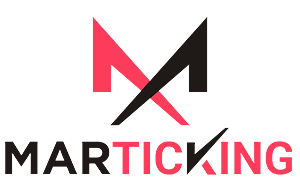When it comes to Google Ads, ad extensions are a valuable tool to enhance the visibility and effectiveness of your ads. They provide additional information to potential customers, making your ads more informative and appealing. However, not all ad extensions are created equal. Some require manual input and customization, while others are fully automated. In this guide, we’ll delve into the world of ad extensions and answer the question, “Which ad extension is available only as a fully automated ad extension?” We’ll also discuss best practices for using ad extensions to optimize your advertising campaign.
Understanding Ad Extensions
Ad extensions are supplementary pieces of information that can be added to your text ads. They serve to provide more context and encourage potential customers to engage with your ad. There are several types of ad extensions, including:
Sitelink Extensions: These allow you to add links to specific pages on your website, giving users direct access to relevant content.
Callout Extensions: Callout text highlights specific features or benefits of your products or services.
Structured Snippet Extensions: These provide a categorized list of what your business offers.
Location Extensions: Location information such as your address and a map of your business can be added.
Price Extensions: Display a list of services or product categories along with their respective prices.
Full Automated Ad Extensions
Now, let’s address the specific question: “Which ad extension is available only as a fully automated ad extension?” The answer is “Automated Call Extensions.”
Automated Call Extensions
These extensions automatically add a phone number to your ad when Google predicts that including a phone number will significantly improve your ad’s performance. Google uses various factors to determine when to display this extension, such as the relevance of a phone call option to the user’s query and the user’s device capabilities.
Best Practices for Using Ad Extensions
To make the most of ad extensions, here are some best practices:
- Relevance: Ensure that the information provided in your ad extensions is highly relevant to the ad and the user’s query. This will improve the user experience and click-through rates.
- Utilize Multiple Extensions: Don’t limit yourself to one type of extension. Use a combination of different extensions that make sense for your business, as this will give users a broader view of what you offer.
- Regularly Review Performance: Keep an eye on how your ad extensions are performing. Make adjustments as needed to optimize their effectiveness.
- Mobile Optimization: With the increasing use of mobile devices, ensure that your ad extensions are mobile-friendly. Mobile users often have different needs and preferences.
- Ad Schedule: If your business operates on specific hours or days, use ad scheduling to display extensions when they are most relevant and likely to drive conversions.
- A/B Testing: Experiment with different ad extensions to see which ones resonate best with your audience. A/B testing can help you determine what works most effectively.
- Monitoring Automated Extensions: While automated extensions can be beneficial, periodically review their performance to ensure they align with your advertising goals.
In the dynamic world of online advertising, optimizing your Google Ads campaign is an ongoing process. Here are some additional insights and best practices to maximize the potential of ad extensions:
- Quality Score Matters: Your quality score plays a crucial role in the effectiveness of your ad extensions. High-quality ads with relevant keywords and landing pages tend to perform better. A good quality score can lead to a lower cost per click (CPC) and better ad placement.
- Ad Extensions on Landing Pages: Ensure that the information provided in your ad extensions aligns with the content on your landing pages. A consistent user experience from the ad to the landing page is key to improving conversion rates.
- Seasonal Relevance: Take advantage of ad extensions to promote seasonal offers, sales, or events. Tailoring your extensions to align with specific periods or promotions can boost click-through rates.
- Local Focus: If your business serves specific locations, make the most of location extensions and callout extensions to highlight local aspects of your products or services. This is especially useful for brick-and-mortar businesses.
- Social Proof with Review Extensions: Review extensions can be a powerful way to build trust with potential customers. Use high-quality reviews and ratings to showcase your business’s credibility and reputation.
- Use All Available Extensions: Google Ads allows you to use multiple ad extensions in a single ad. Don’t hesitate to leverage various extensions like site links, callouts, and structured snippet extensions in one ad to provide a wealth of information to users.
- Ad Extensions for Mobile: Mobile users often have distinct needs and preferences. Customize your ad extensions to be mobile-friendly, and consider using call extensions to make it easy for mobile users to connect with your business directly.
- Test and Analyze: The beauty of digital advertising is the ability to test and analyze your ad extensions. A/B testing different extensions, headlines, and descriptions can help you refine your approach and identify what resonates most with your audience.
- Monitoring and Adjusting: Continuously monitor the performance of your ad extensions. Make data-driven decisions to adjust your strategy as needed to achieve your advertising goals.
- Consult Google’s Guidelines: Google provides guidelines and best practices for using ad extensions effectively. Staying informed about Google’s recommendations can help you make the most of this powerful advertising tool.
Conclusion:
In summary, ad extensions are a valuable asset in your Google Ads toolkit. Understanding the specific roles of different ad extensions and employing best practices can significantly enhance the performance of your ads. Whether you’re looking to boost click-through rates, improve user engagement, or drive more conversions, ad extensions offer a flexible and effective means to achieve your advertising goals. Keep experimenting, analyzing, and refining your approach to make the most of these powerful tools in your digital advertising strategy.


